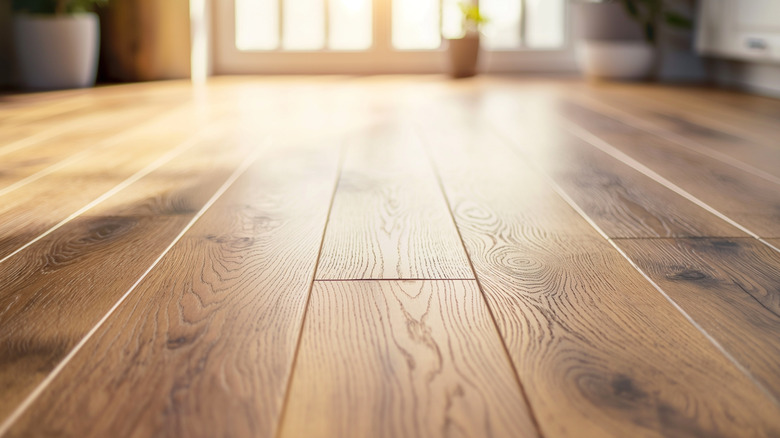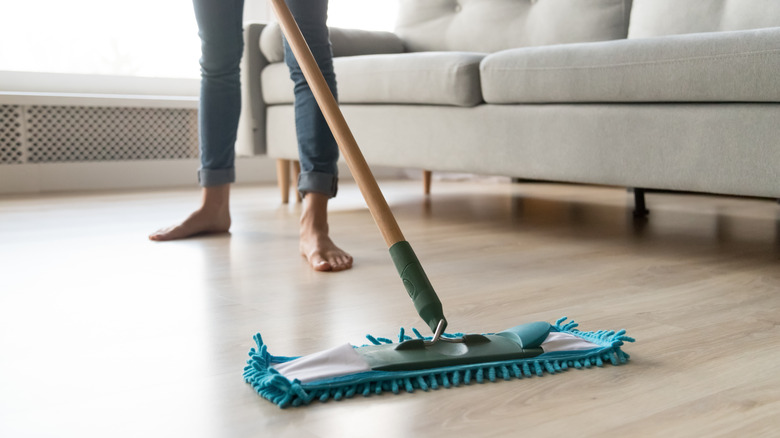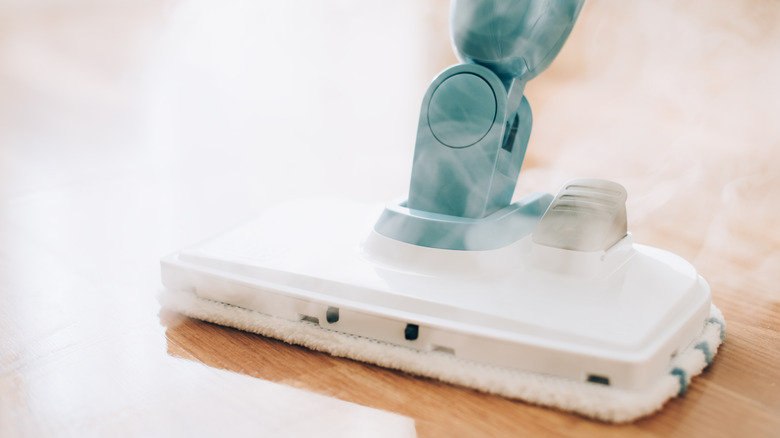Want Hardwood Floors That Look Brand New? It Has Everything To Do With This Simple Cleaning Trick
Hardwood floors are among the best flooring materials for a house because of their aesthetic quality, durability, and ease of maintenance. Hardwood flooring has a natural beauty still in demand today that is warm and elegant but, at the same time, very tough. Certain woods, like oak, maple, cherry, and hickory, are inherently strong, which gives them a long lifespan. In addition, well-maintained hardwood flooring adds considerable value to a house. Because of these considerations, hardwood floors should always be cleaned properly. A simple trick for beautiful hardwood floors: dry microfiber mop high-traffic areas daily, steam mop sealed floors weekly, and avoid using copious amounts of cleaning liquids on unsealed wood.
Different areas of the house can get dirty faster than others because areas with more traffic from people and pets will accumulate dust and dirt quicker than areas with less traffic. This is why the frequency of cleaning the hardwood floor should be based on how quickly it gets dirty. A rule of thumb is that hardwood floors in hallways, kitchens, and the living room are high-traffic areas and should be cleaned daily with dry mopping, and this is followed up with a wet mop once a week.
It is important to note that not all hardwood floors should be cleaned with water or a steam mop, as it may cause damage. This is most relevant for unsealed hardwood floors. Ideally, unsealed wood floors should not be cleaned with water, which can eventually cause warping, swelling, and even rot.
Daily maintenance for wood floors
The first stage in cleaning hardwood floors is to use a technique called dry mopping with a microfiber mop. This simple method, which can be done daily, is essential for keeping hardwood floors clean because it removes dust, debris, and allergens without the risk of water damage. Dry mopping removes the loose dust and dirt from the floor, making it a quick and effective way to clean general areas. In addition, dry mopping is frequently used as a preparatory step to wet mopping.
To begin dry mopping a floor, remove any obstructions on the floor like furniture or other decor. Next, go to one end of the room and get the mop head as close to the room's edges as possible. Grab the mop handle, place the mop head in front of you and flat on the floor, and slowly walk to the other side of the room in a straight line, ensuring all gathered dirt and debris stays in front of the mop head. Repeat this process until every portion of the floor is mopped, and use a vacuum or broom to collect all the accumulated dust and dirt once finished.
Preserve the flooring with regular cleaning
The second stage of cleaning hardwood flooring requires using the steam mop. As previously mentioned, it's best to dry mop the floor before using the steam mop to remove the loose dust and dirt and avoid dirty streaks due to the steam mixing with the dirt.
Because of the potential risk of damage, it may be best to use alternative cleaning methods for unsealed hardwood floors. Alternatives to using a steam mop can include a damp cloth or microfiber mop, or instead of using only water to dampen the cloth or mop, natural oils, a solution of vinegar and water, or a mild pH-neutral cleaner are good options, as these would not leave any residue or damage the finish of the wood. In a similar process to dry mopping, it's best to start from one end of the room and go in a straight line to the other end. Continue with this motion, but periodically check and see if the mop pad is dirty and replace it as needed. Lastly, wash the pads, allow them to dry, and store them for the next use.
To retain its beauty, safeguard the finish, and increase its longevity, hardwood floors should be cleaned and maintained regularly. While routine maintenance protects against damage and general wear and tear, regular cleaning removes dirt and debris that can scrape and dull the surface. When properly cared for, hardwood floors can last for a surprisingly long time, reducing the need for replacements. By ensuring their upkeep, your investment, which is a vital part of the home, will continue to look its best for many years with proper care.


